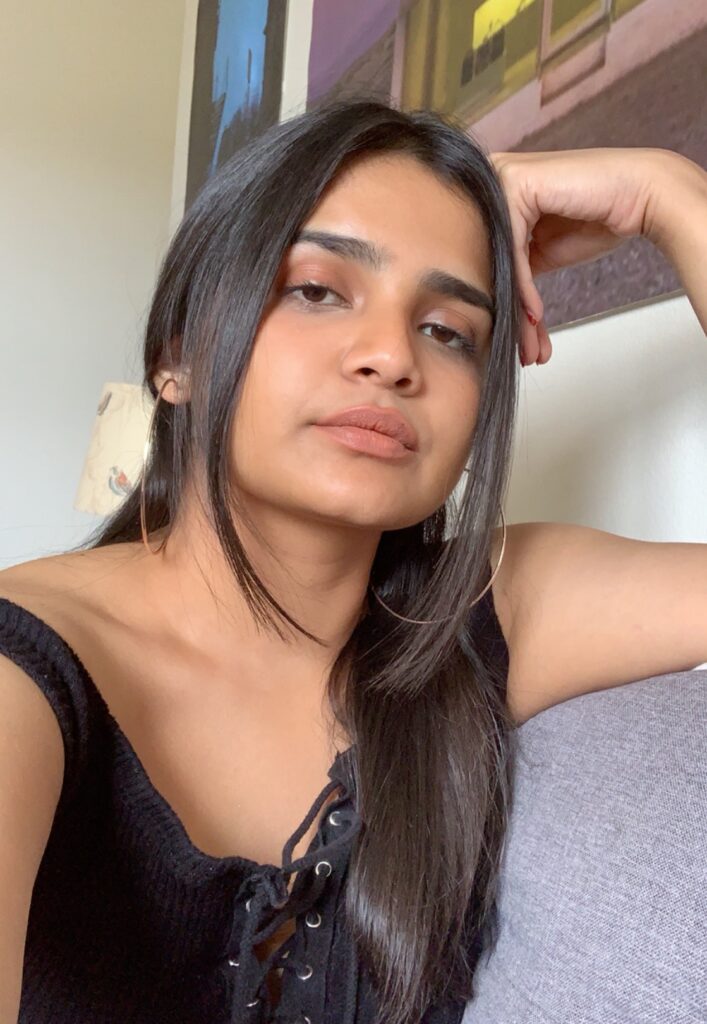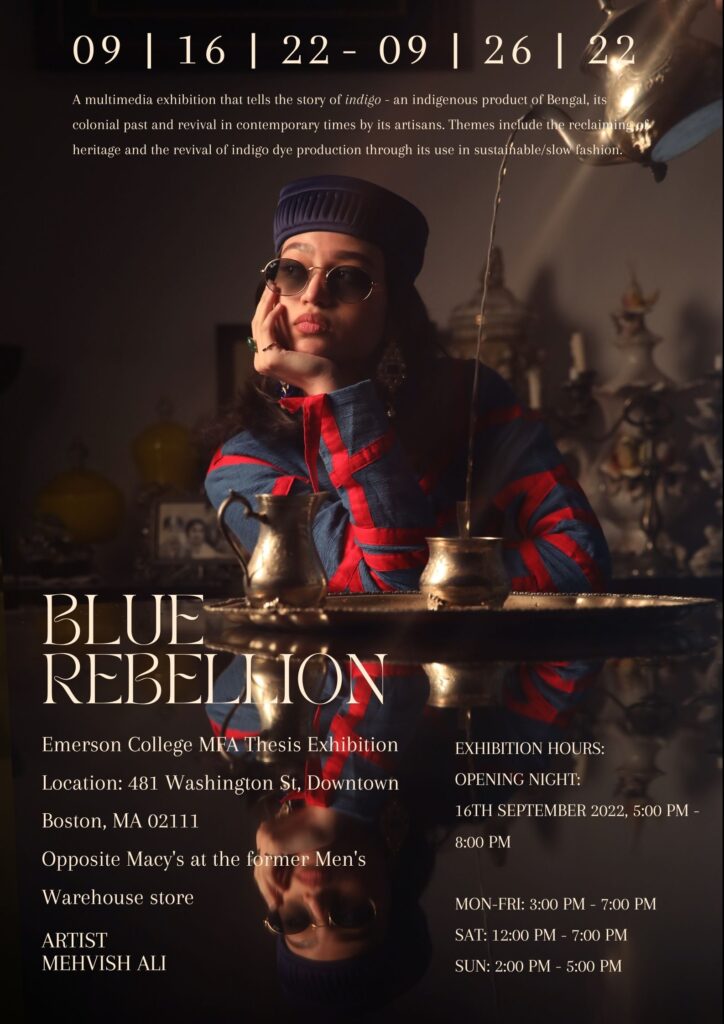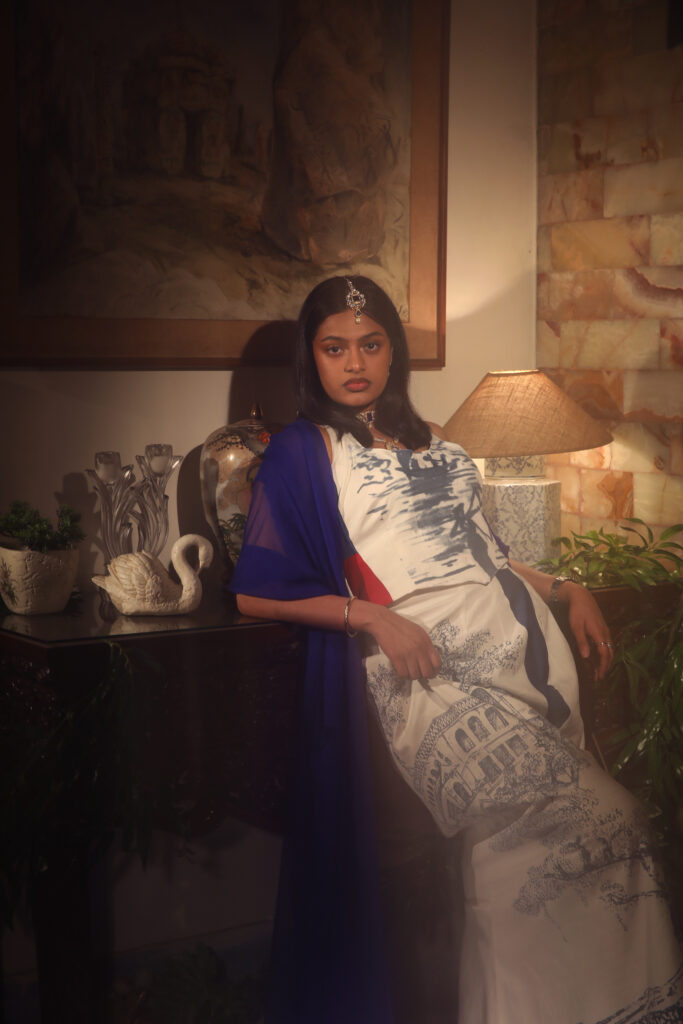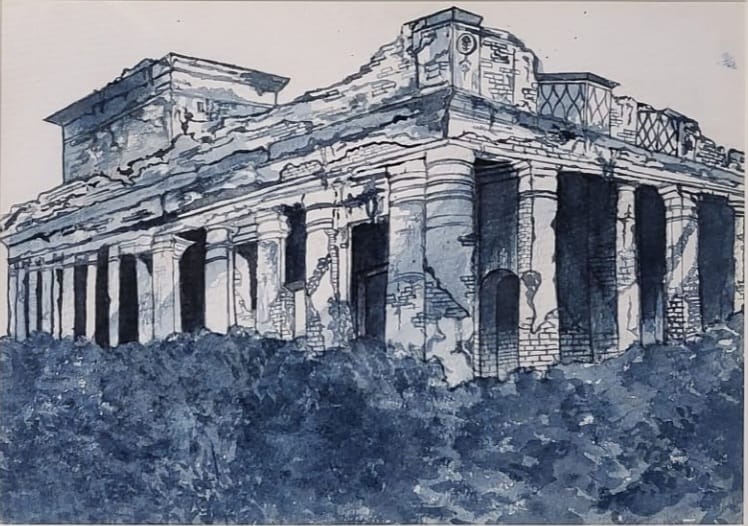Grad Student’s ‘Blue Rebellion’ Tells Story of Indigo
Indigo is one of the seven colors of the rainbow, but the history of indigo — an indigenous product of Bengal — has more of a sordid history than the colorful arches in the sky. Mehvish Ali’s MFA ’23 new multimedia exhibition Blue Rebellion illuminates the history of indigo.

Ali turned her thesis project into the exhibition, utilizing photographs, original textile work she made, artwork, and a short documentary. Blue Rebellion opens on September 16 in Downtown Boston.
Ali answered questions about the exhibition, her art, and her Emerson experience:
Q: What is the title of your thesis project?
Ali: Blue Rebellion – the story of indigo, it’s colonial past and contemporary revival
Q: Why did you want to create Blue Rebellion?
Ali: I wanted to know more about this indigenous product, which is part of Bangladesh’s heritage and also ignite interest about it among an international audience.
It’s a play on the Indigo Revolt that erupted as a protest against the exploitation and cruelty faced by the indigo cultivators at the hands of their colonizers. Indigo Rebellion, represents this spirit of resistance through the revival of this indigenous product by the people of the land from where it originated.

Q: How personal is this to you and your family history?
Ali: Because it is part of Bangladesh’s heritage, it is personal for all of us since we are from there.
Q: Why did you want Blue Rebellion to be a multimedia exhibition? How does incorporating a documentary, photos, and creating textiles tell the story you want people to know?
Ali: Since my major is Film & Media Art, I wanted to explore the different artistic avenues to tell this story. Using the documentary and photos is to give voice to the people behind indigo revival and visually show the audience the amount of skill and hard work required to produce this product.
It’s also important to highlight how indigo dye production is providing job opportunities for marginalized communities, especially their women members. Incorporating textiles was necessary to physically show how indigo can be used in slow and sustainable fashion. I’ve also always had an interest in designing so I wanted to see if there was a way to combine all these elements to represent this project.

Q: Is this your first public exhibition? If not, what are other exhibitions you’ve created?
Ali: Yes, this is my first solo public exhibition!
Q: How has your Emerson experience helped you professionally and personally?
Ali: Emerson has been extremely welcoming to me. It has let me envision dreams that I never thought were possible.
My chair for my committee, Paul Turano [Associate Professor, Visual & Media Arts] is an award-winning visual artist, played a key role in encouraging me to explore unconventional approaches to storytelling. He inspired me to push the boundaries and move out of my comfort zone. His constructive criticism and unstinting support of all my crazy ideas made it possible for me to pursue this ambitious project.
My faculty and friends from Emerson, as well as associates of the Emerson community have been very encouraging and helpful throughout my journey.
Without them, I would not have been able to have this exhibition.
Q: What are you planning on doing after graduation?
Ali: I will be applying for OPT [Optional Practical Training] and hopefully continue to pursue my passion of telling stories through different visual mediums.

Q: What would you ask if you were interviewing yourself about this exhibition?
Ali: I would ask myself, “Was all the pain worth it?”
Q: Is there anything else you’d like to share about yourself, the exhibition, your work, or anything else?
Ali: I am a Bangladeshi visual artist, aspiring designer and music fanatic interested in examining multiculturalism, colonial history, female identity, and politics of fashion through her creative work. I am a storyteller and combine my love of art, photography, fashion, music and films to explore unconventional ways of expressing provocative and/or controversial topics.
I was particularly fascinated by indigo because it is a natural dye derived from a plant and is made through an arduous process that requires skill and patience. I became interested in indigo after learning about its dark colonial history and the recent movement to revive it by the people of Bangladesh.
Blue Rebellion will open on September 16 with a special opening night event from 5 to 8 pm, and runs through September 26. The exhibit is open and free to the public at the former Men’s Warehouse, 481 Washington Street, Boston.
Exhibition hours are:
Monday–Friday: 3:00 to 7:00 pm
Saturday: 12:00-7:00 pm
Sunday: 2:00 to 5:00 pm
Categories